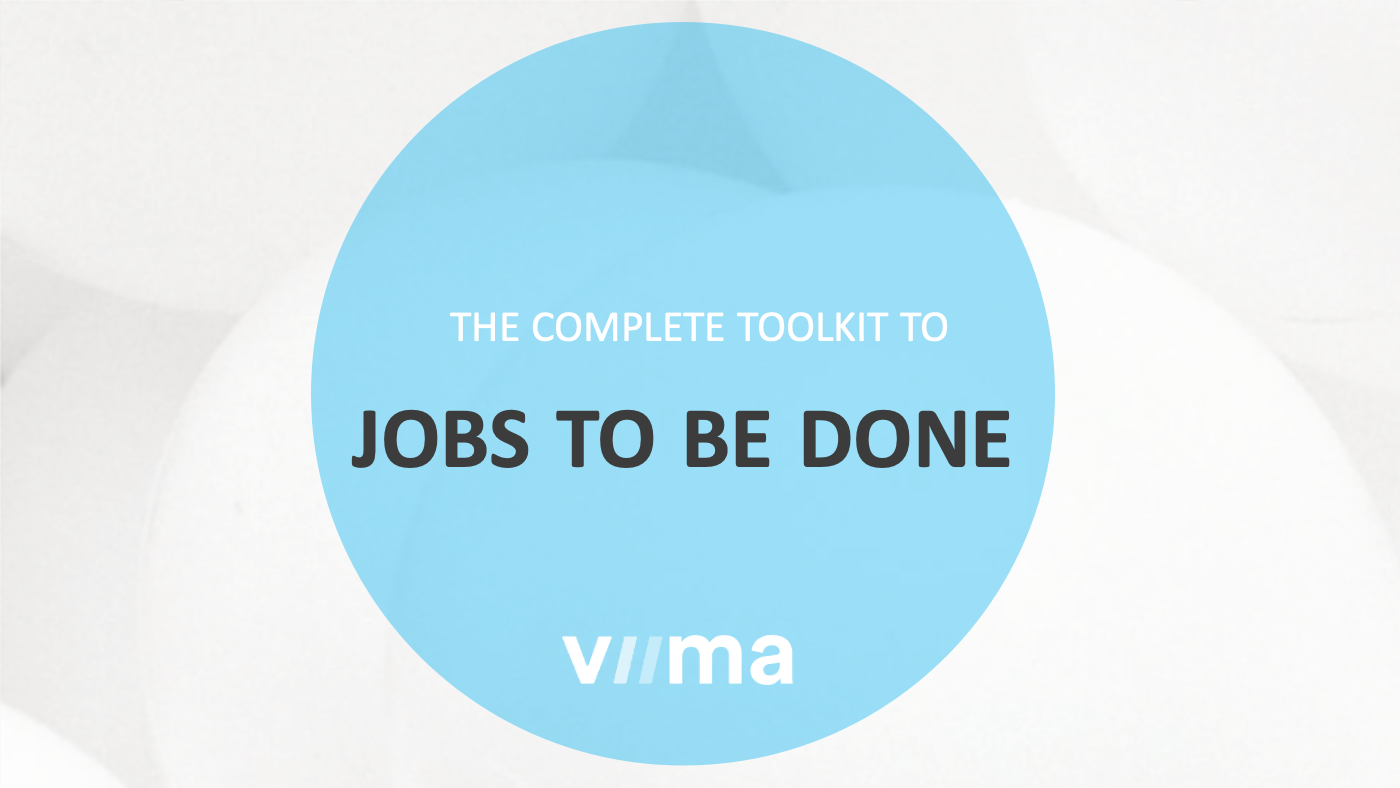Demystifying Lean Six Sigma: A Continuous Improvement Framework
53% of Fortune 500 companies use Six Sigma and up to 82% of those in the top Fortune 100 embrace the business improvement methodology. Research says that Six Sigma has saved companies over $400 billion.
40 years later the Six Sigma methodology is as popular as ever, with new variants and adaptations, like the Lean Six Sigma, making it more versatile for other industries and types of organizations as well.
Lean Six Sigma, the rising star of continuous improvement, promises to enable incremental innovation through a systematic approach to improving processes, products, or services. Attracted by the enticing potential of Lean Six Sigma methodology to fuel innovation, individuals are drawn towards training and certification while organizations rush to hire experts or implement Lean Six Sigma projects.
One can only wonder: is this yet another gold rush? Should you get certified in Lean Six Sigma, should organizations train their employees, or should you even consider implementing the framework?
To help you better understand if Lean Six Sigma could bring any value to you, either as an individual or as an organization, we’ll try to demystify the secrets of LSS in this article by exploring its definition, practices, and tools.
As with many of our articles, we seek to provide a comprehensive understanding of the topic, while also bringing forward practical advice which you can take into your everyday work. That being said, we advise you take your time with this one, bookmark it and come back to it to get a full grasp of the subject or to get more clarity.
Table of contents

From Six Sigma to Lean Six Sigma
Socrates’ quote, "the beginning of wisdom is the definition of terms” comes to mind each time we want to dive deep into a topic. It’s a good reminder that understanding and clarity start with accurately defining and explaining the key concepts of the topic.
Traditional Six Sigma:
Before the Lean Six Sigma, there was Six Sigma. Not to go too far down the math rabbit hole, but maybe it’s good to clarify that "sigma" (σ) represents the standard deviation of a set of data points or a probability distribution. Standard deviation tells you how much the individual data points differ from the mean (average) value in a given dataset.
In the context of Six Sigma, Six refers to the number of standard deviations between the mean and the nearest specification limit. The more sigma away from the mean the limit is, the less defects and variation are acceptable, indicating higher levels of quality and process performance. Theoretically speaking, a “Six Sigma” process should not produce more than 34 defects per million opportunities (DPMO).
Now, back to simpler things.
In the context of manufacturing and quality control, Six Sigma uses statistical methods within the DMAIC (Define, Measure, Analyze, Improve, Control) framework. The objective of this systematic approach is to analyze process variability with the goal of minimizing deviations and defects, ultimately enhancing overall quality.
The concept was popularized and developed by Motorola in the 1980s and later adopted by other companies like General Electric. Over time, Six Sigma has evolved into a comprehensive business methodology, which takes us to the newer variant of Six Sigma, Lean Six Sigma.
Lean Six Sigma:
Lean Six Sigma is focused on simplifying processes and improving process reliability by bringing together the process improvement rigor and statistical analysis of Six Sigma with the waste elimination and efficiency focus of Lean.
Lean is rooted in the Toyota Production System and focuses on eliminating waste, increasing efficiency, and optimizing flow. It aims to create value by identifying and removing non-value-added activities or processes, resulting in streamlined operations and reduced lead times.
While both methodologies come from the manufacturing industry, LSS is mostly used in other functions across all industries. And while the Lean Six Sigma is typically closer to Lean, it’s important to have a good understanding of the Six Sigma philosophy as well.
Lean Six Sigma brings together two sets of philosophies and tools. Balancing these elements can vary across projects. For instance, Lean's broader scope might lead to prioritizing its principles in some cases. On the other hand, Six Sigma's data analysis tools dig deeper into root causes of problems. To solve problems effectively, you need to blend these two approaches in a balanced way.
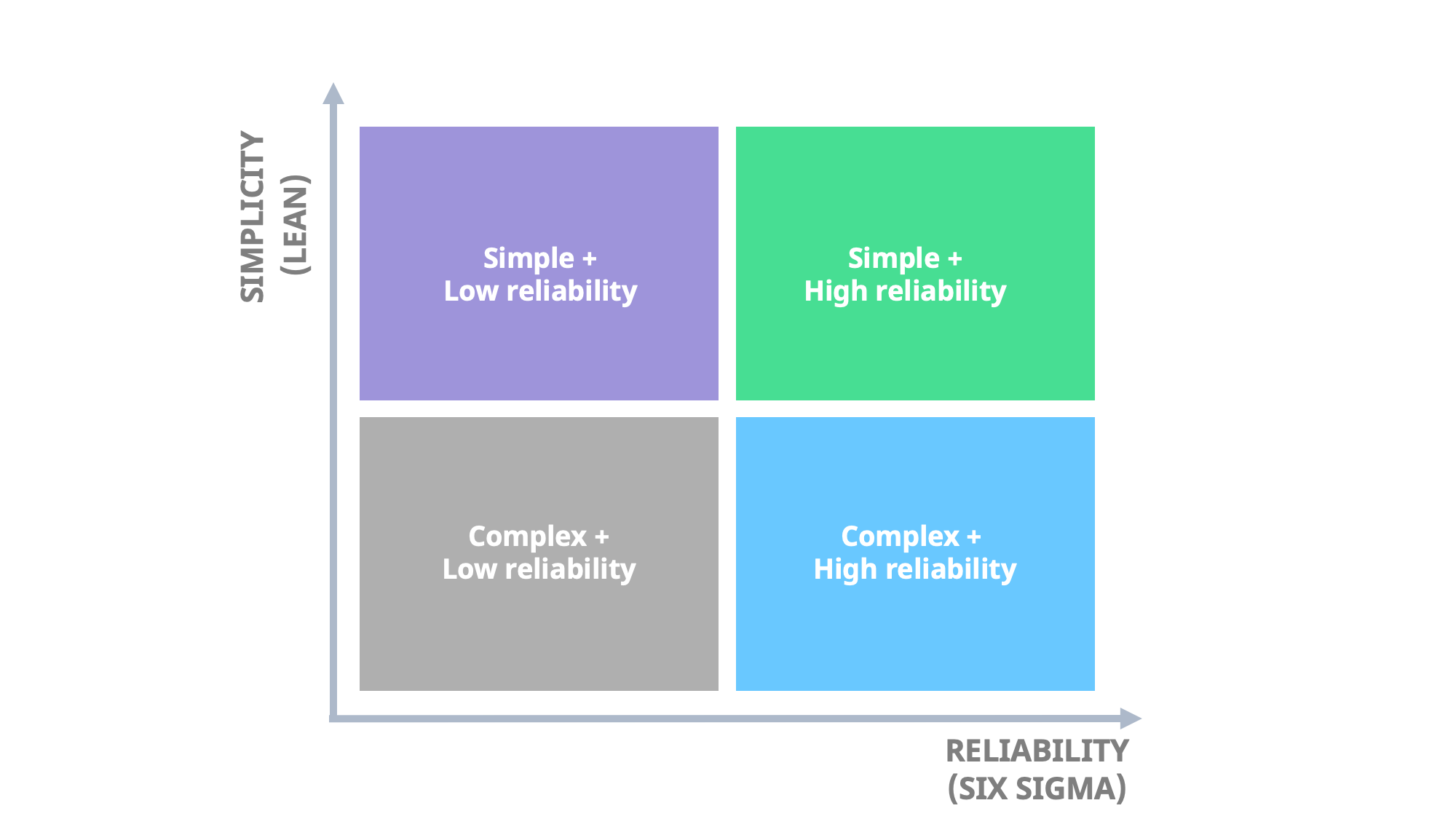
Can Lean Six Sigma help you innovate?
Can Lean Six Sigma really spark innovation? Is it just a tool for optimizing processes and increasing efficiency or can it unravel new opportunities? If you look at innovation strictly from the point of view of disruptive and radical services, products or markets, then you might want to look the other way because this is unlikely to take you there.
However, if you want a pragmatic and flexible approach to staying competitive and adapting to a changing environment, Lean Six Sigma can certainly support and drive incremental innovation.
At its core, Lean Six Sigma is guided by several principles, which depending on whom you ask, can be either three, five or ten. We chose the six most relevant ones.
- Customer Focus: LSS centers around understanding and meeting customer needs and expectations. It sees the customer’s perspective as critical for improvement, to helps align internal processes with external requirements in order to create value.
- Continuous Improvement (Kaizen): LSS promotes a culture of continuous improvement where incremental changes are consistently made to enhance processes, products, and services.
- Data-Driven Decision-Making: Data and facts guide decision-making in LSS. Statistical analysis and measurement systems ensure informed and effective problem-solving. These integrates with the Lean approach to identify and eliminate various forms of waste including defects, overproduction, excess inventory etc.
- Structured Problem-Solving: The DMAIC (Define, Measure, Analyze, Improve, Control) framework in Six Sigma provides a structured approach for problem-solving and process improvement.
- Standardization: LSS seeks to establish standardized processes and practices to ensure consistent and reliable outcomes.
- Leadership Commitment: Successful LSS implementation requires commitment from leadership to provide resources, support, and remove obstacles.
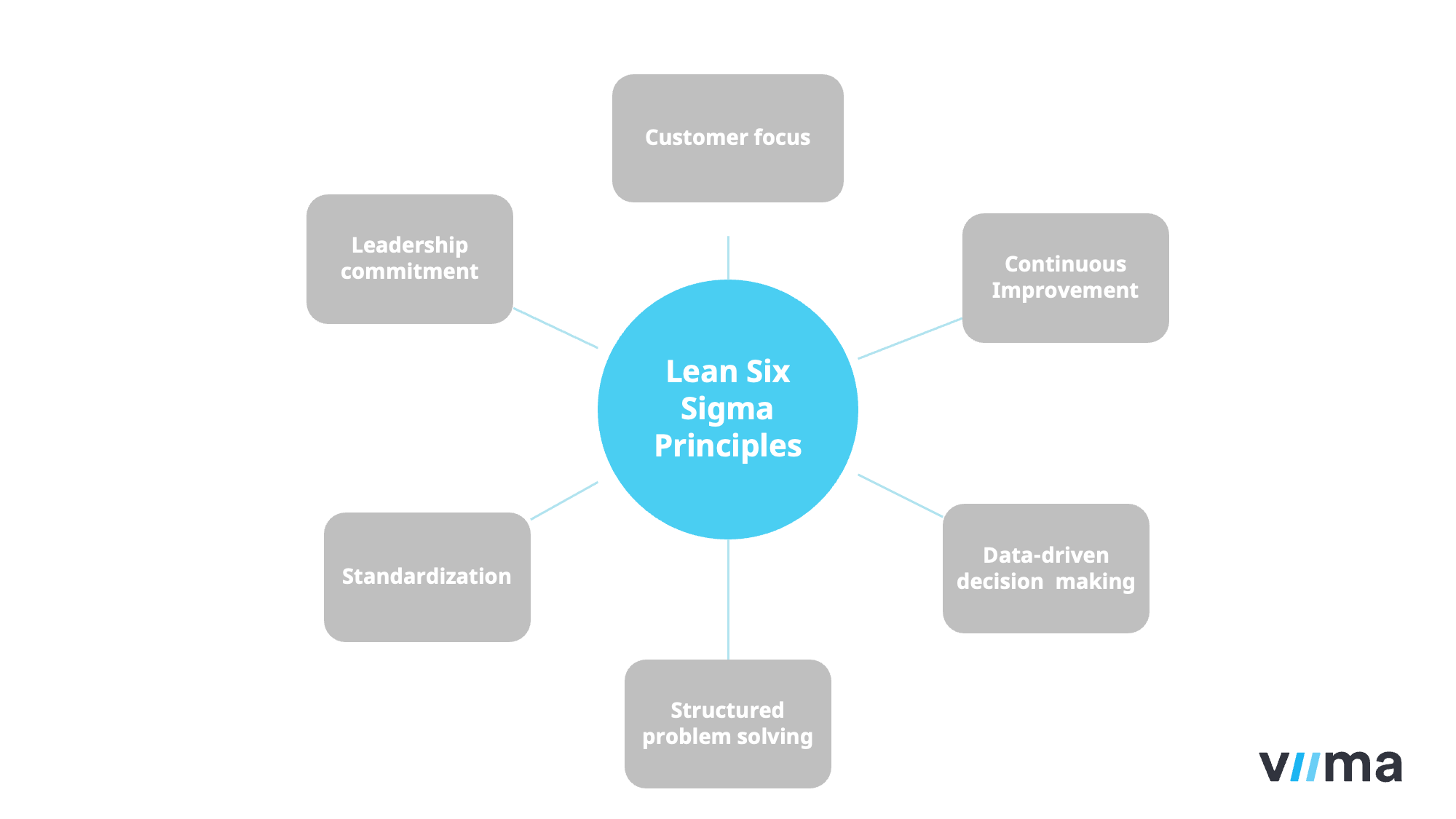
While Lean Six Sigma doesn't focus on radical shifts, it harnesses the impact of deliberate, incremental progress towards excellence. But before deciding on this approach, you should also be aware of the benefits and constraints.
Benefits:
- Revenue Growth:
For example, if an employee is spending 20% of their time on administrative tasks, you can improve the process, so they only spend 10% of their time on those tasks. The gained time can be redirected to other value generating activities like selling products and services.
- Operating Margin:
- Asset Efficiency:
Drawbacks:
- Rigidity and Complexity:
One drawback of LSS is its potential rigidity. The strict adherence to predefined methodologies and metrics might not be suitable for every situation. Teams might find it challenging to adapt the methodology to unique contexts or when dealing with complex, non-standard processes.
- Incremental Improvements vs. Breakthrough Innovation
LSS’s focus on incremental improvements might limit its suitability for fostering radical or disruptive innovation. While LSS excels at optimizing existing processes, it might not encourage the breakthrough thinking needed for transformative changes or entirely new products/services.
- Time Intensive:
LSS projects typically follow the DMAIC (Define, Measure, Analyze, Improve, Control) model, which involves a structured approach. While this ensures thorough problem-solving, it can also make projects time intensive. This could be a limitation in rapidly changing or dynamic environments where quick response and implementation are crucial.
Is Lean Six Sigma for you?
Having clarified the basics of Lean Six Sigma, what it means and where it comes from, let’s now have a look at how it works in practice, and when it can be most useful.
Maybe the most popular thing about Six Sigma, and consequently, Lean Six Sigma is the “belts” system which attests to the different levels of expertise and roles of practitioners. While not mandatory, the system provides a structured approach to learning and applying Lean Six Sigma methodologies, ensuring a standardized skill set across the organization.
These are the main belts, their meanings, roles, and how they contribute to the Lean Six Sigma framework.
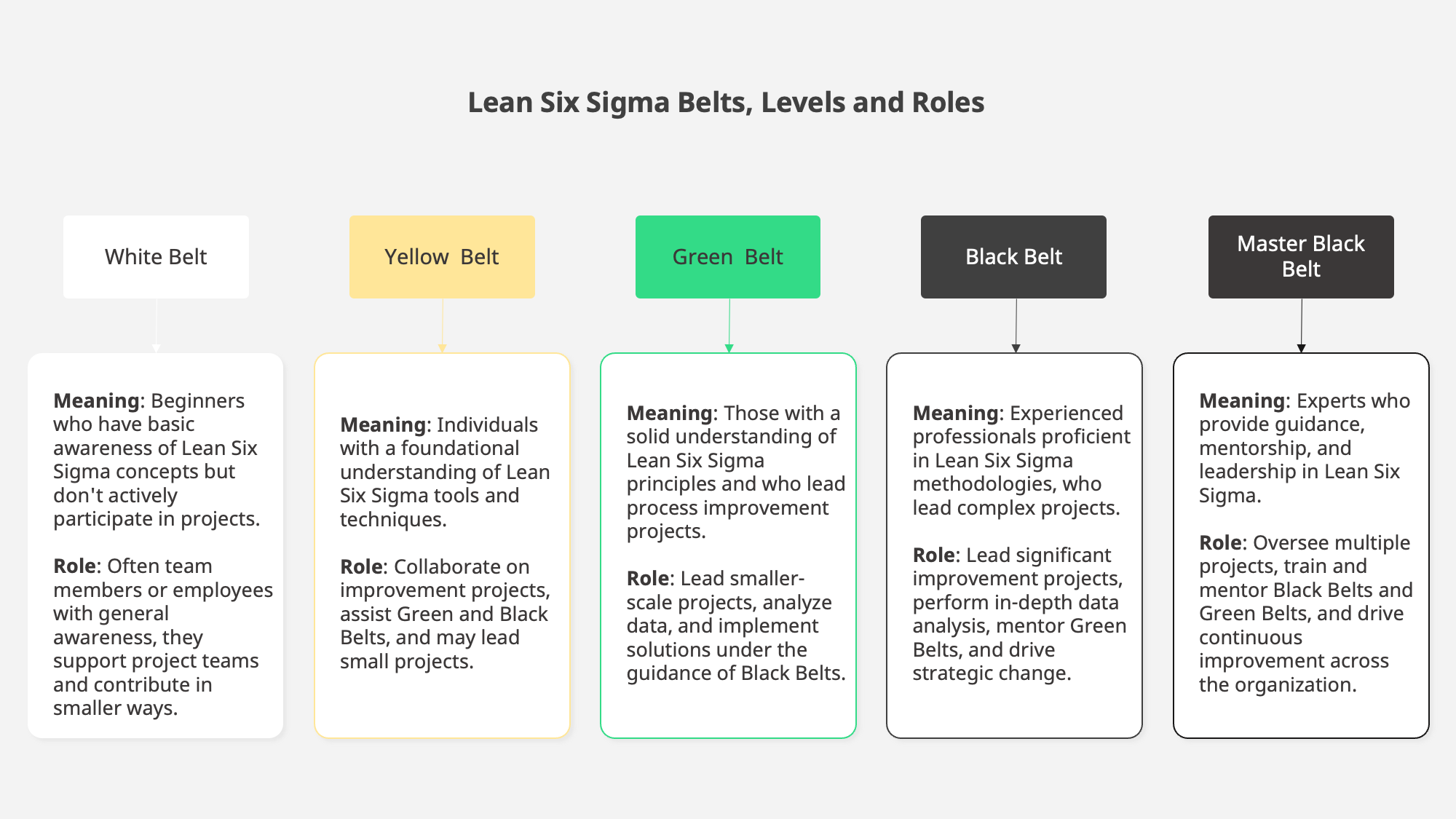
Naturally, individuals advance in their career the more experienced they are and the better the belt certificate is. However, it’s good to keep in mind that the experience doesn’t come from a simple training and a certificate.
From an organizational standpoint, it’s essential to remember that while these trainings and certifications can be very useful, in practice they aren’t worth anything unless you also provide the right conditions for Lean Six Sigma to thrive.
While these trainings and certifications can be very useful, in practice they aren’t worth anything unless you also provide the right conditions for Lean Six Sigma to thrive.
Some companies still hold on to the “secrets” of Lean Six Sigma for dear life, but the real secret is that you have to put in the work and explore how the tools can be leveraged to bring real value. By applying the methods to practice, from on-the-job experience, testing, mentorship, the use of these tools, and learning from mistakes, you gradually start to connect the dots and drive real results.
Since our mission is to democratize innovation, providing free access to knowledge is one way to achieve that.
So, we created this Lean Six Sigma toolkit which you can download for free here.
It comes with a wide range of tools and techniques that are used throughout the DMAIC phases of the Lean Six Sigma framework. Which tools you use, and how, depends on the specific project, goals, and challenges at hand.
To conclude, a certificate under your belt (yes, pun intended), will not turn you into an expert unless you commit to LSS principles, you adopt the new mindset and get the appropriate support from top management.
As you can see, Lean Six Sigma is not the magic bullet to continuous improvement. Rather than sticking to one method, it’s better to first understand or make those in your team understand the bigger goal: bring innovation into the game through incremental improvements. The means by which you do it, should be decided internally.
But before jumping onto the LSS bandwagon, look for answers to these questions to help you understand what continuous improvement approach you need for your specific situation. Here’s a simple way that can help you figure out the methodology to choose.
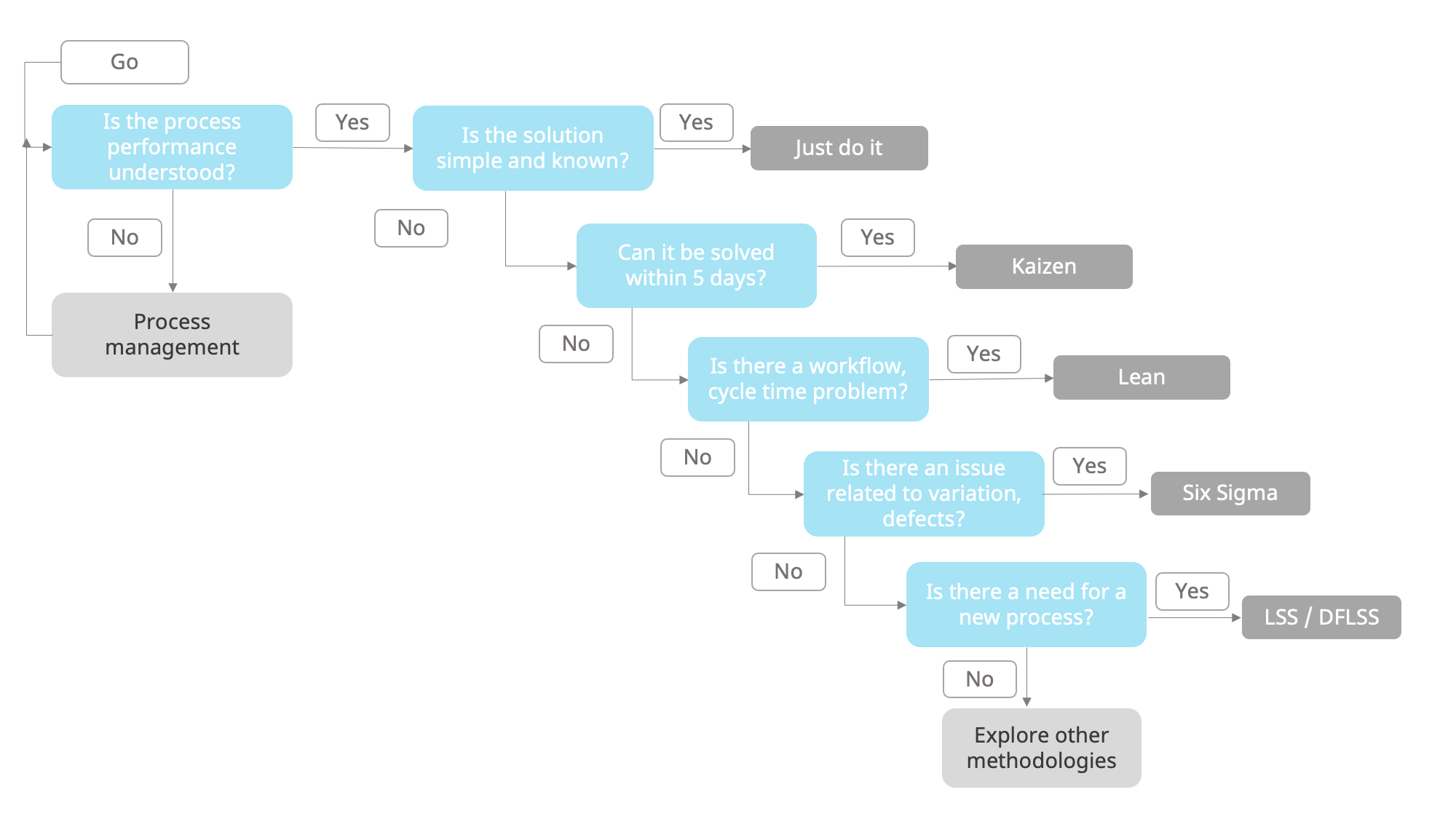
If you need some inspiration, here you can find a list of possible LSS projects that can be done in various industries.
Lean Six Sigma in practice
The core structure that is used in Six Sigma, as well as in Lean Six Sigma is the DMAIC model, which stands for the five steps: Define, Measure, Analyze, Improve, and Control. This roadmap helps you go after problems in a systematic manner, and it’s what makes the Lean Six Sigma successful.
Quite often people jump to improve things based on spontaneous ideas, but it’s important not to skip any step in the process. Employees might suggest improvement ideas on a regular basis, but unless you have some data and facts to support the hypothesis, you don’t know if they are feasible, or you won’t get management support to implement it.
You don’t want to dismiss their ideas either, nor make the whole process heavy and difficult for them. That’s why it’s good to have an idea management process in place. Among other things, it helps you hold on to the ideas you receive and get back to them once you have the data to back up the assumptions. It also does a lot of heavy lifting related to automating as much of the process as you can.
At the same time, to successfully implement and sustain LSS projects you need a variety of skillsets that come from other areas and not just from LSS training. This can be change management expertise, project management, effective communication and so on.
So, let’s get down in the trenches to see how to put Lean Six Sigma in practice, what tools, knowledge and skills are needed for each step in the DMAIC model.
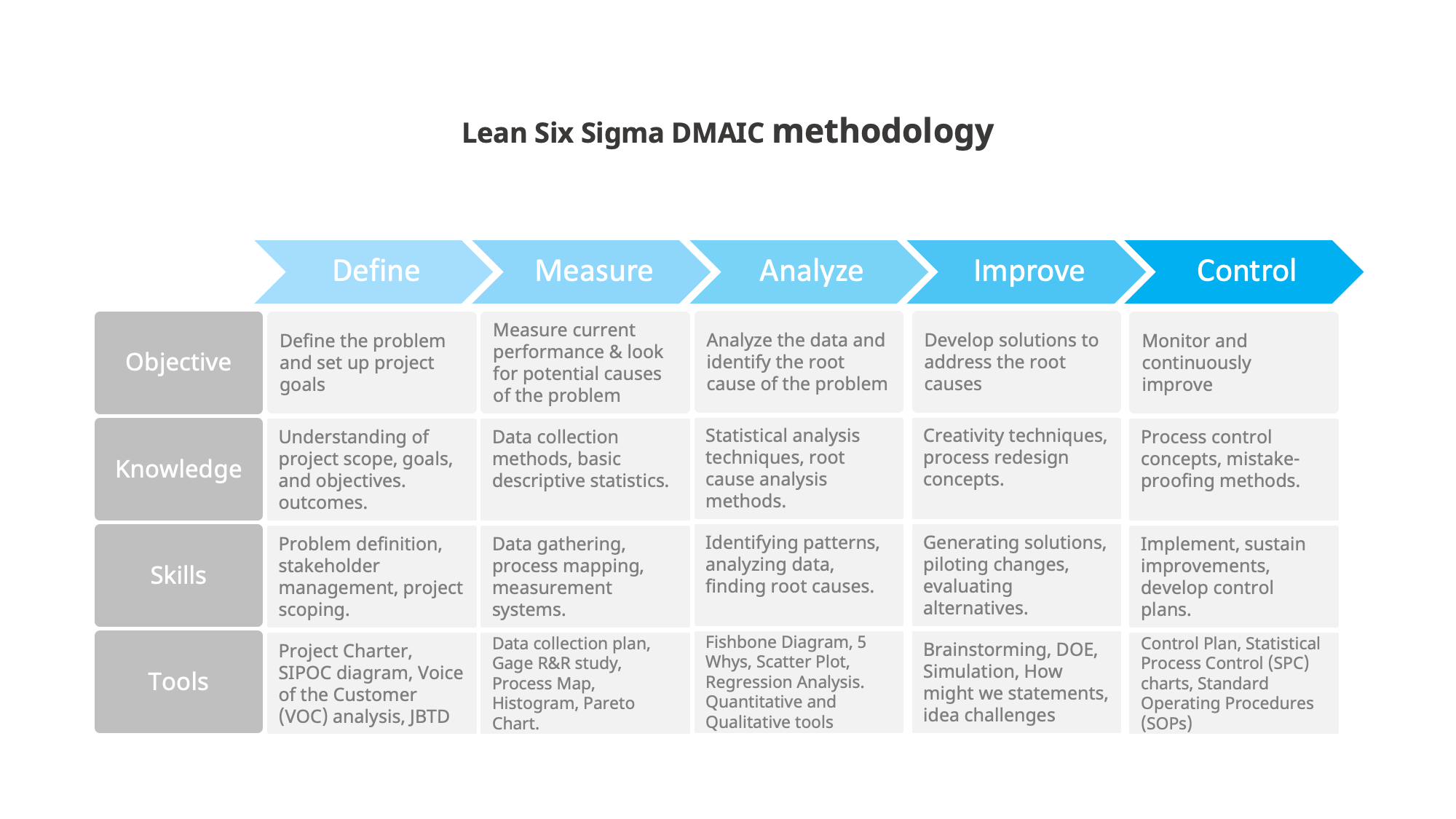
You will notice that there are a lot of tools and controls out there, and based on your context, you need to pick which ones are relevant. If you try to implement all of them, you’ll get nothing done and burn people out.
So, look for the lightest process of the following that covers each of these fundamental needs for your specific situation.
Define
As the customer is at the center of any Lean Six Sigma improvement project, you need to identify the critical characteristics or parameters of a product or process that directly impact customer satisfaction or meet their requirements.
This is the CTQ, Critical to Quality concept, which is very important because any variation can result in a significant impact on the quality of the product or service from the customer's perspective. By identifying and measuring CTQs, you can focus the improvement efforts on the factors that matter most to customers.
By identifying and measuring CTQs, you can focus the improvement efforts on the factors that matter most to customers.
By the end of the Define stage, you should have a clear understanding of the problem, the goals of the project, and the scope of work. This stage sets the foundation for the rest of the DMAIC process, guiding subsequent efforts in data collection, analysis, improvement, and control.
In a nutshell for the Define stage you want to have the:
- Knowledge: Understanding of project scope, goals, and objectives. Knowledge of the process under study and its relationship to business outcomes.
- Skills: Problem definition, stakeholder management, project scoping.
- Tools: Project Charter, SIPOC (Suppliers, Inputs, Process, Outputs, Customers) diagram, Process Mapping, 5S, Voice of the Customer (VOC) analysis, JTBD
You can discover these tools in the free Lean Six Sigma toolkit which explains in more detail what they are and how to use them. When it comes to the VoC analysis, while it’s a standard tool when working with the LSS framework, there are some nuances we’d like to bring up.
VoC has lost a bit of its popularity and as some research showed, there is a disconnect between the business value of VoC programs and customer experience.
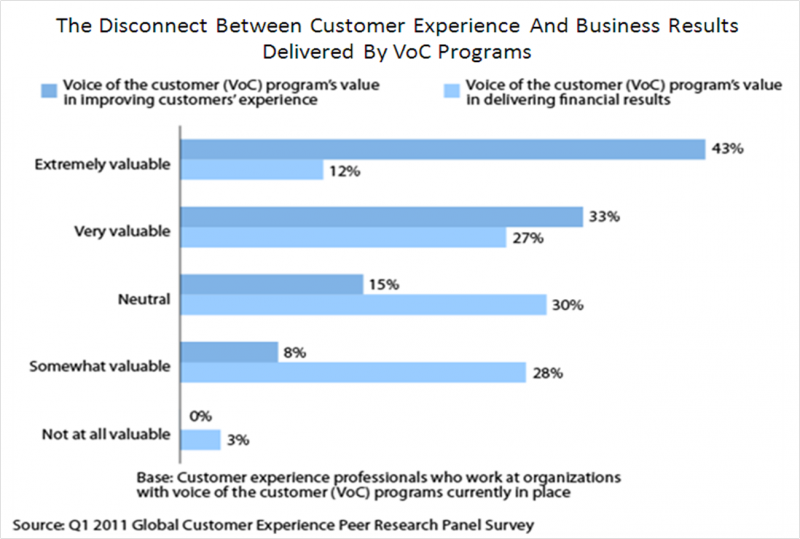
Basically, they say that VoC programs usually underdeliver. It doesn’t mean it can’t still be a valuable tool, but like every other tool out there, it depends how you use it and put it into practice. An alternative, even though not a part of the usual Lean Six Sigma toolkit, is the Jobs To Be Done framework.
The difference between the two lies in how they approach the goal of better understanding customer needs to create or improve products and services. Through VoC you collect feedback, ideas and suggestions from customers through surveys, interviews, forms, social listening etc.
All of that can be valuable, but instead of solely analyzing customer feedback, JTBD seeks to uncover the fundamental problems or tasks that customers are looking to solve, which they typically aren’t great at communicating themselves. The emphasis is on understanding the context in which customers make purchasing decisions and how a product or service fits into their lives to fulfil specific needs. You can read all about JTBD here and get the free toolkit for JTBD here.
Measure
Before making any improvements, you ought to collect data to figure out where you are right now. By comparing the data before and after the improvement, you can see if they actually work.
In this stage, the focus shifts from defining the problem to quantitatively measuring the current state of the process. The main objectives of the Measure stage include:
- Data Collection Plan: Design a plan to gather necessary data.
- Data Collection: Execute the data collection plan.
- Measurement System Analysis (MSA): Ensure reliable measurement methods.
- Process Mapping: Visualize process steps and interactions.
- Baseline Performance Metrics: Calculate current process metrics.
- Process Capability Analysis: Evaluate process's ability to meet requirements.
- Data Analysis: Apply statistical methods to identify patterns.
- Current State Assessment: Assess process performance against goals.
- Establishing Baselines: Set benchmarks for performance metrics.
In a nutshell for the Measure stage you will need:
- Knowledge: Data collection methods, basic descriptive statistics.
- Skills: Data gathering, process mapping, understanding measurement systems.
- Tools: Data Collection Plan, Process Map, Histogram, Pareto Chart.
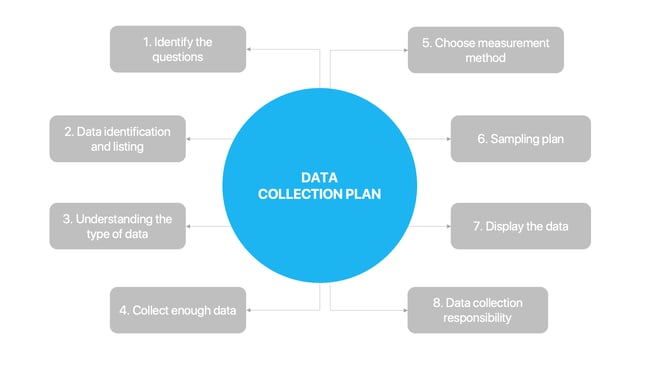 By the end of the Measure stage, the project team should have a comprehensive understanding of the current process performance, supported by data-driven insights.
By the end of the Measure stage, the project team should have a comprehensive understanding of the current process performance, supported by data-driven insights.
Analyze
Analyze, the third stage of the DMAIC model can be considered one of the more challenging stages due to its complexity and the critical decision-making involved.
In this stage, the focus is on analyzing the data collected in the previous stages to identify the root causes of problems and to gain insights into the process. The main objectives of the Analyze stage include:
- Data Validation: Ensure accurate and reliable data.
- Data Visualization: Create visuals to identify patterns.
- Root Cause Analysis: Identify underlying causes systematically.
- Statistical Analysis: Quantify relationships between variables.
- Hypothesis Testing: Test assumptions using statistics.
- Process Mapping: Refine process maps based on analysis.
- Data Segmentation: Break down data for insights.
- Identify Improvement Areas: Spot inefficiencies and defects.
- Confirm Root Causes: Validate hypotheses through analysis.
- Risk Assessment: Evaluate potential solution risks.
- Recommendation Development: Create improvement suggestions.
Lean Six Sigma practitioners need to be equipped with strong analytical skills, a deep understanding of statistical methods, and the ability to navigate complex processes to succeed in this phase.
- Knowledge: Statistical analysis techniques, root cause analysis methods.
- Skills: Identifying patterns, analyzing data, finding root causes.
- Tools: Both Quantitative (Pareto, Histogram, Run charts, Regression Analysis, etc.) and Qualitative tools (5 Whys, FMEA, Fishbone diagram – identify causes of a problem (establish and clarify the cause-effect relationship) XY (cause effect) matrix – prioritize potential causes identified with Fishbone), Scatter diagram (to suggest the strength of a relationship between two variable).
There are many tools you can use in this phase, and which we described in more detail in the toolkit. You don’t have to use them all and no single tool can fix all problems.
Improve
In essence, the Improve stage aims to develop, test, and implement solutions to address identified root causes and improve the process's performance. The Improve stage embodies the spirit of continuous improvement, a core Lean principle.
Solutions are tested, refined, and adjusted iteratively to achieve the best possible outcome.
The Improve stage in Lean Six Sigma's DMAIC process involves:
- Solution Generation: Develop potential solutions.
- Solution Evaluation: Assess and prioritize solutions.
- Pilot Testing: Test solutions on a small scale.
- Data Collection: Gather data on solution effectiveness.
- Refinement: Adjust solutions based on data.
- Implementing Changes: Deploy refined solutions.
- Monitoring Results: Track solution impact.
- Standardization: Establish new process standards.
- Documentation: Document changes and outcomes.
In short, for this stage you need:
- Knowledge: Creativity techniques, process redesign concepts.
- Skills: Generating solutions, piloting changes, evaluating alternatives.
- Tools: Brainstorming, Design of Experiments (DOE), Simulation, How might we statements, ideation workshop, idea challenges, Lean instruments: Kanban, Kaizen, 5S, Standardized work – SOP (template good for toolkit), FMEA.
Control
Maybe one of the most important, and sometimes overlooked steps in the DMAIC model is the Control one. This is what helps you ensure that all efforts have not been in vain, and that you can sustain and guarantee long term performance.
A lot of people stop when they see results and just move on, excited to start something new. The assumption is that if things have worked, the process controls are also in place.
So, before you close up your improvement project you want to make sure you have a system or process that monitors the results over time. You should collect data on a regular basis, whether that is daily, weekly, or monthly to make sure that things stay where they are, in that new Improve state.
Before you close up your improvement project you want to make sure you have a system or process that monitors the results over time
This is especially important for new employees that were not involved in the improvement process. When new people come on board you want to make sure the new behaviors and changes don’t fall apart. On most projects, the goal is to have 12 months or more of sustained improvement.
For example, you can use visual aids that make it easier to understand how to do certain jobs. It will make it easier for new people and will reinforce the behaviors. Also, keep in mind the incentives needed to make sure that improvements are encouraged and supported.
For a higher rate of success in the control phase, you’ll need:
- Knowledge: Process control concepts, mistake-proofing methods.
- Skills: Implementing and sustaining improvements, developing control plans.
- Tools: Control Plan, Statistical Process Control (SPC) charts, Standard Operating Procedures (SOPs)
Conclusion
Lean Six Sigma plays a pivotal role in continuous improvement, yet the tools and framework are not the only part of the equation. While mastering these concepts is essential, to make LSS effective, you need to tailor it to your own challenges. This, however, is no easy feat.
The truth is, the toolbox of Lean Six Sigma, while powerful, isn't always the best fit for every scenario. Sometimes, the most efficient path forward involves embracing simpler tools that match the complexity of the task at hand. With a strategic approach you can avoid unnecessary complexity, and ultimately achieves the desired outcomes of continuous improvement and ultimately, incremental innovation.
At the same time, while certifications certainly hold value, it's essential to recognize that their primary contribution should extend beyond individual achievement. Indeed, fostering knowledge transfer can translate to improved bottom-line results.
Yet, at the core, the ultimate objective remains elevating organizational performance. The path to success in continuous improvement is paved with practical experience, continuous learning, and the application of knowledge. This can very well be achieved with frameworks like Lean Six Sigma, or with something much simpler. The key is figuring out what best fits your needs, and then just getting started.
If you are ready to embark on this continuous improvement journey, we want to arm you with plenty of practical resources on the topic. And, in case you need one, we also provide the platform with practical, tailored templates where you can start your Lean Six Sigma project, or other continuous improvement programs, within minutes, and for free.




